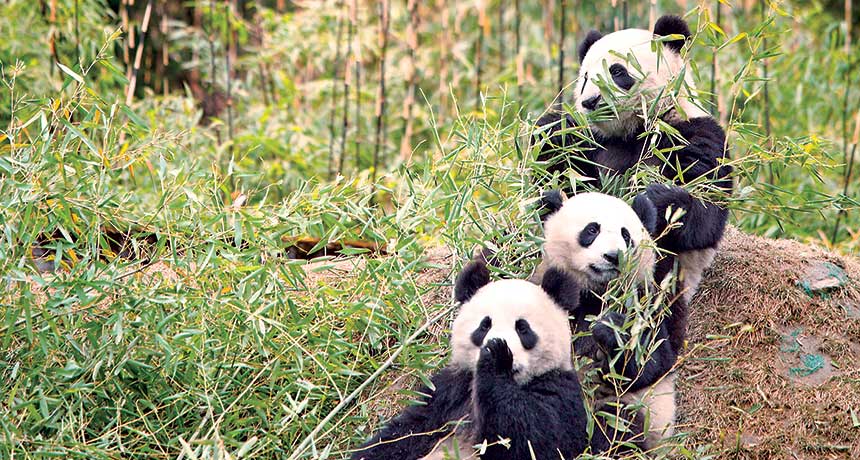Pandas’ gut bacteria resemble carnivores’
Unlike other vegetarians, the bamboo eaters lack plant-digesting microbes

FOOD ISSUES Since adopting a bamboo diet around 2 million years ago, giant pandas still haven’t fully adapted to the fibrous food: Their guts don’t harbor the plant-degrading bacteria typical of other herbivores.
Chi King/Flickr (CC BY 2.0)





